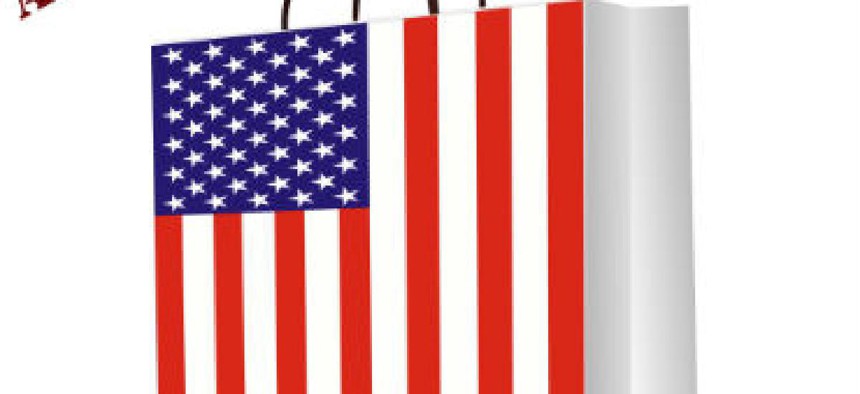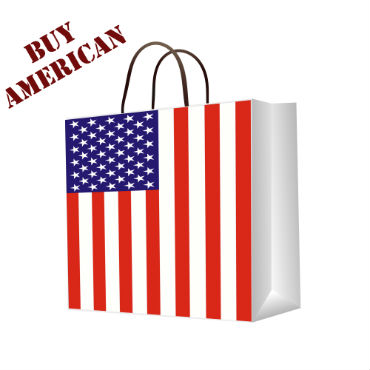Is IT exempt from Trump's 'Buy American' order?

Given the global supply chain, determining the national provenance of a piece of technology is a tricky business. And in any case, Congress long ago carved out an exception for commercial IT products.

President Donald Trump's April 18 "Buy American and Hire American" executive order prompted consternation in the federal IT community. But one of the order's stated goals is "to ensure that, to the extent permitted by law ... procurements maximize the use of materials produced in the United States," and federal law specifically exempts "information technology that is a commercial item" from the Buy American Act of 1933.
That exemption was codified in the Consolidated Appropriations Act of 2004 and is written into Part 25.103(e) of the Federal Acquisition Regulation.
There are other exemptions and waiver opportunities as well, and Trump's order instructs agencies to determine whether Buy American rules are being bent too freely. The statutory exemption for IT, however, would seem to be outside the scope of that review.
That doesn't mean there won't be more confusion.
Despite the carve-out offered by the FAR, IT purchases have still faced supply-chain scrutiny. Chinese-made tech has drawn particular attention, and one acquisition expert who spoke on condition of anonymity said many agencies seem unaware of the Congress' broad IT exemption.
"Everybody still follows the [Trade Agreements Act] rules," he said, referring to a broad exemption to Buy American that permits certain purchases from countries with which the U.S. has a trade agreement.
That loophole, which applies to acquisitions valued at $203,000 or more, could tighten significantly as the Trump administration revisits trade pacts, but for the moment it provides significant leeway. And at the other end of the scale, the expert noted, government purchase cards and the micro-purchase threshold offer near-total flexibility for buys of a few thousand dollars.
"Government employees are expected to simply use their best professional judgment to get the best value for the government," he said.
Where does IT get made?
More fundamentally, though, the provenance of technology is tremendously difficult to determine. Supply chains for most hardware stretch across Asia, and software is often developed by teams that are scattered around the globe. Where is something like the Linux operating system, which powers countless government servers and counts thousands of international contributors to its code, technically from?
Tom Cochran, a former State Department and White House official who is now Acquia's vice president for public sector, told FCW such sourcing questions are difficult even in traditional manufacturing.
"What is the provenance of a product in this global economy?" he asked. "A Chevy is an American car by brand, but a lot of it is made in Canada; a lot of it may be made in Mexico. Toyota is a Japanese car, but they have a lot of plants in the U.S. And that's the tangible world," he said. "When you start talking about the cyber world, that's just so much harder."
The acquisition expert who spoke on background agreed. The Buy American Act is "a ridiculously antiquated law that was built for a time when cars were all manufactured and integrated in one place," he said. "The carve outs and exceptions make it virtually impossible to follow ... it's an impossible matrix of nonsense."
Sorting through the supply chain
Impossible or not, however, agencies are now tasked with assessing their compliance with Buy American laws, their use of waivers and their plans for maximizing U.S. purchases. And if there's a silver lining, it's that certain contracts and acquisition efforts already underway might deliver some of this much-needed data.
NASA's SEWP program, for example, has detailed supply-chain data for the products it offers. And ASI Government CEO Tim Cooke told FCW that the category management efforts being driven by the Office of Federal Procurement Policy and the General Services Administration have the potential to deliver unprecedented supply chain insights.
"The main thing [category management] does is reach deeply into the supply webs of the government and the marketplace," Cooke explained. "It develops a deep appreciation of the supply web or supply chain as it goes back multiple layers."
That research is being done anyway, he said, and the sourcing details will be there if agencies or suppliers choose to use them. Buy American, in his view, "is just another preference," like small business or veteran set-asides. "It creates additional tradeoffs in the way that other set-asides do ... both for the program side and the contracting side. And it involves a good deal more work to ensure that they’re complying with the letter and the spirit of the rules."
"I'm not here to be a nay-sayer," Cooke added. "If this is national policy, then the goal is to efficiently and effectively implement that policy, in full recognition of what the economic realities are in terms of these now-globally diversified supply chains."
NEXT STORY: JIDO goes agile, but can DOD?


